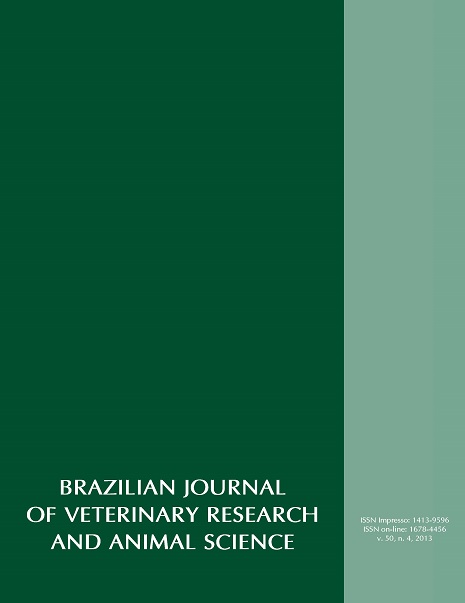Cellular alterations induced by heat stress in bovine embryos
DOI:
https://doi.org/10.11606/issn.2318-3659.v50i4p257-264Keywords:
Heat stress, Embryo, Bovine, Cellular changesAbstract
Adverse environmental conditions such as high temperature and humidity increase internal body temperature (hyperthermia) of lactating dairy cows resulting in heat stress and decreased pregnancy rates. Embryonic susceptibility to elevated temperature has been well characterized both in vivo and in vitro. Exposure of zygote and two cells stage bovine embryos to elevated temperature decreases embryonic development to the blastocyst stage. However, the bovine embryo becomes more resistant to the deleterious effects of heat stress as it proceeds in its development. The heat-induced reduction in embryonic developmental competence is due, at least in part, to the numerous cytoplasmic and nuclear changes induced by high temperature. In the embryo cytoplasm heat shock increases the number of swollen mitochondria, disrupts microtubules and microfilaments. In the nuclear compartment, elevate temperature induces DNA fragmentation characteristic of apoptosis. This form of cell death is a phenomenon regulated throughout the preimplantation embryonic development, since high temperatures do not trigger apoptosis in embryos of two or four cells. Heat-induced apoptosis in embryos ≥ 16 cells can be seen as a quality control mechanism for removing damaged blastomeres, since block apoptosis in these embryos increase its susceptibility to heat shock. Furthermore, heat stress can also affect the redox status of the embryo inducing a consequent oxidative stress.Downloads
Downloads
Published
2013-08-17
Issue
Section
UNDEFINIED
License
The journal content is authorized under the Creative Commons BY-NC-SA license (summary of the license: https://
How to Cite
1.
Lima RS de, Assumpção MEOD, Visitin JA, Lopes FF de P. Cellular alterations induced by heat stress in bovine embryos. Braz. J. Vet. Res. Anim. Sci. [Internet]. 2013 Aug. 17 [cited 2025 Apr. 15];50(4):257-64. Available from: https://revistas.usp.br/bjvras/article/view/74665





